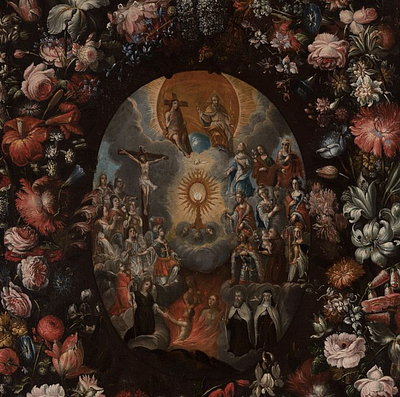Workshop of BARTOLOME ESTEBAN MURILLO (Seville, 1617 - 1682)."Virgin with Child".Oil on canvas. Re-enteled.
Lot 70
About Seller
Setdart Auction House
Carrer Aragó 346
Barcelona
Spain
Setdart Subastas was born in 2004 and is currently the first online art auction in Spain with solidity, prestige and reliability guaranteed by our more than 60,000 users. Setdart has a young, dynamic and enterprising team ready to successfully manage the purchase and sale of art works through custom...Read more
Estimate:
EUR€8,000 - EUR€1,000
$8,333.33 - $1,041.67
Absentee vs Live bid
Two ways to bid:
- Leave a max absentee bid and the platform will bid on your behalf up to your maximum bid during the live auction.
- Bid live during the auction and your bids will be submitted real-time to the auctioneer.
Bid Increments
| Price | Bid Increment |
|---|---|
| EUR€0 | EUR€10 |
| EUR€200 | EUR€25 |
| EUR€500 | EUR€50 |
| EUR€1,000 | EUR€100 |
| EUR€3,000 | EUR€200 |
| EUR€5,000 | EUR€500 |
| EUR€10,000 | EUR€1,000 |
| EUR€20,000 | EUR€2,000 |
| EUR€50,000 | EUR€5,000 |
About Auction
By Setdart Auction House
Jul 14, 2021
Set Reminder
2021-07-14 06:30:00
2021-07-14 06:30:00
America/New_York
Bidsquare
Bidsquare : OLD MASTERS
https://www.bidsquare.com/auctions/setdart-auction-house/old-masters-7202
Setdart Auction House sofia@setdart.com
Setdart Auction House sofia@setdart.com
- Lot Description
Workshop of BARTOLOME ESTEBAN MURILLO (Seville, 1617 - 1682). "Virgin with Child". Oil on canvas. Re-enteled. Framework of the twentieth century that follows models of the seventeenth. Size: 98 x 82 cm; 128 x 110 cm (frame). In this canvas the Virgin Mary is represented with the Child in her arms, both embracing each other with tenderness. Mary appears three-quarter length, seated, holding her son with both hands, surrounding him with her arms, and looking directly at the Child. Jesus, for his part, appears almost naked, although Mary covers him with a white cloth as is common in this iconography. The Child turns his body towards his mother, resting his hands on her breast. The composition is placed in a dark interior, the figures are cut out on a neutral background that is illuminated by the soft light radiating from the figures. The Virgin wears pink inner tunic and blue mantle and golden veil, colors that allude respectively to purity, the future Passion of her son, the concepts of truth and eternity and the divine Glory. Formally, important traces of Murillo's art can be appreciated in this work, both in the way of composing the scene and in the type of the child, of great sweetness and naturalism, as well as in the studied and effective illumination and in the chromaticism tending to monochrome, around ochre, earthy and carmine colors. Typical of Murillo's first stage, developed between 1645 and 1650, are precisely these closed backgrounds, the predominance of earthy tones and the large and compact figures, such as those in this painting. In works such as the "Virgin of the Rosary" of the Prado Museum or the "Virgin and Child" of the Pitti Palace we see this same triangular composition, with the Virgin seated on a parapet with the Child on her knees, dressed in red and blue with a golden veil. In both a relationship of tenderness and affection is established between the figures, represented as mother and child rather than as devotional figures, in a naturalistic sense typical of Murillo and his followers. Also, in both examples the Virgin looks directly at the viewer, as is the case here. The differences, personal to the author of this canvas, are visible, however, in compositional nuances and in the model of the female face, somewhat more classical than those used by Murillo in his Virgins. Thus, in this work the scene is simplified, bringing the figures closer to the viewer in a fully devotional sense. On the other hand, the Child appears attentive, happy to be with his mother but attentive to the viewer, establishing a relationship. Likewise, Mary is a woman of great beauty and delicate features, but somewhat more adult than those of Murillo, practically teenagers.
- Shipping Info
-
In-house shipping available. Please inquire at admin@setdart.com.
-
- Buyer's Premium



 EUR
EUR CAD
CAD AUD
AUD GBP
GBP MXN
MXN HKD
HKD CNY
CNY MYR
MYR SEK
SEK SGD
SGD CHF
CHF THB
THB















